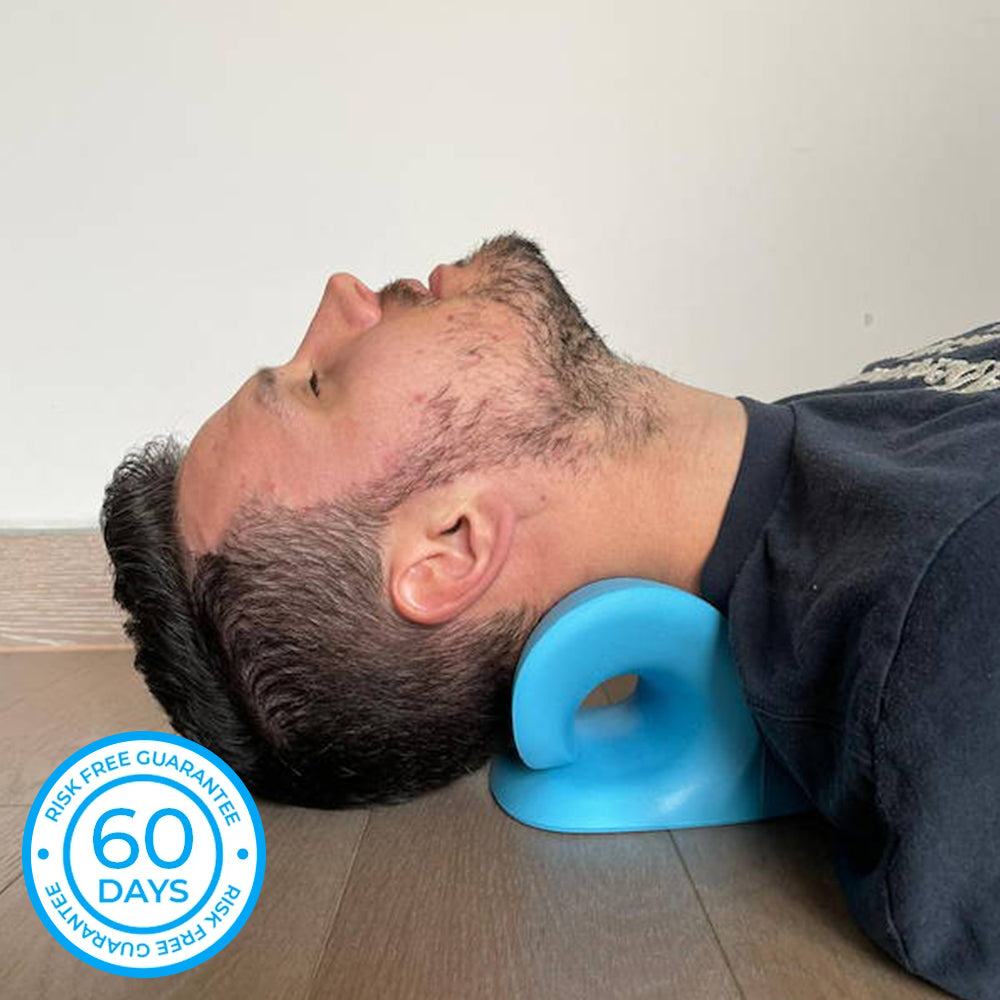Neck Cloud for Cervical Assistance: Kick Back and Soothe Neck Pain
Neck Cloud for Cervical Assistance: Kick Back and Soothe Neck Pain
Blog Article
Neck Pain in the Office: Determining Risk Factors and Applying Ergonomic Solutions
Neck discomfort in the office is a prevalent issue that can influence worker health and efficiency. By recognizing the various danger variables contributing to neck discomfort and implementing ergonomic solutions, companies can produce an extra conducive work setting.
Usual Reasons For Neck Pain
Neck discomfort in the workplace is a widespread issue that can be attributed to numerous common reasons. In addition, repeated movements such as regular bending, twisting, or getting to can additionally add to neck pain over time.

Ergonomic Threat Elements
Poor comfort designs in the work environment can considerably add to neck discomfort amongst workers. Variables such as incorrect desk height, insufficient chair assistance, and uncomfortable positioning of computer screens can all play a role in the advancement of neck discomfort. When employees are forced to rest for extended durations ready that stress their neck muscles, it can result in tightness, soreness, and a lot more severe bone and joint concerns over time.
Additionally, bad ergonomic methods can lead to staff members taking on unpleasant postures while working, such as craning their necks to see a computer system display or getting to annoyingly for a mouse or key-board. neck cloud. These repetitive activities and unnatural positions can put unnecessary anxiety on the neck and bordering muscular tissues, resulting in discomfort and reduced performance

Workdesk Setup Recommendations
To reduce the risk of neck discomfort and pain, there are several desk configuration suggestions that workers must think about. Guarantee that the computer system display is placed at eye degree to stop straining the neck by looking up or down.
It is also essential to have sufficient illumination to decrease eye stress, as scrunching up your eyes or leaning forward can cause neck tension. Arrange the workdesk format to keep regularly made use of things within arm's reach, restricting the requirement for repeated twisting or reaching activities. By carrying out these desk configuration recommendations, workers can create a more ergonomic workspace that supports neck health and minimizes the threat of developing job-related neck discomfort.
Stretching and Exercise Tips
Easy desk-friendly stretches can help ease neck discomfort and avoid tightness. Neck rolls, shoulder shrugs, and gentle side-to-side neck next page stretches are efficient in alleviating stress.
Establishing pointers or making use of apps that motivate movement can assist develop a regular extending regimen. By prioritizing these activities, you can improve your physical health, minimize the danger of neck discomfort, and enhance your overall efficiency in the workplace.
Relevance of Normal Breaks
In a busy job setting where demands can contribute to physical pressures like neck pain, establishing a regimen that emphasizes the significance of normal breaks is critical. By including brief breaks right into the job regular, employees can minimize the risk of establishing neck discomfort and improve overall convenience and productivity.
Routine breaks enable staff members to relax their muscle mass, stretch, and transform placements, preventing rigidity and advertising better blood circulation. Encouraging employees to take short breaks every 30-60 mins can help in reducing the build-up of tension in the neck click for more and shoulders. These breaks can also work as a possibility for staff members to exercise leisure methods or mild neck stretches, further promoting bone and joint health. Executing a society that values and prioritizes routine breaks can have a substantial influence on lowering neck pain and improving general health in the workplace.
Conclusion
In verdict, attending to ergonomic risk elements and executing appropriate workstation configurations are essential in reducing neck pain in the work environment. By advertising good posture, offering sufficient assistance, and encouraging regular breaks and stretches, companies can develop a much healthier and extra efficient workplace for Source staff members. Focusing on worker well-being with ergonomic remedies is key to avoid pain and enhancing general workplace complete satisfaction.
Neck pain in the office is a widespread problem that can affect staff member health and performance. By recognizing and attending to these common reasons of neck discomfort in the workplace, companies can take proactive actions to produce a more ergonomic and comfortable work setting for their workers.
Poor comfort designs in the work environment can substantially add to neck discomfort among staff members. By executing these workdesk configuration suggestions, staff members can create an extra ergonomic work area that sustains neck health and wellness and lowers the danger of creating job-related neck discomfort.
Neck rolls, shoulder shrugs, and gentle side-to-side neck stretches are efficient in alleviating stress.
Report this page